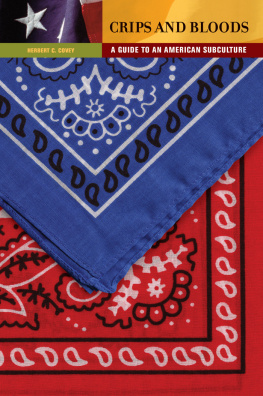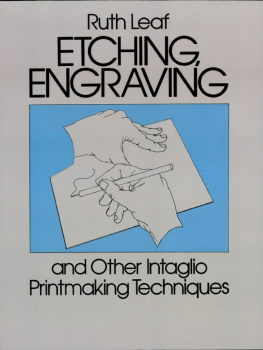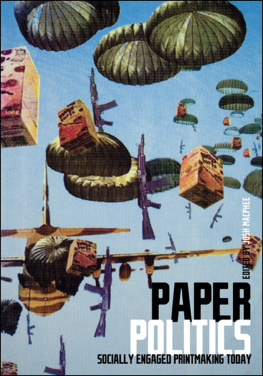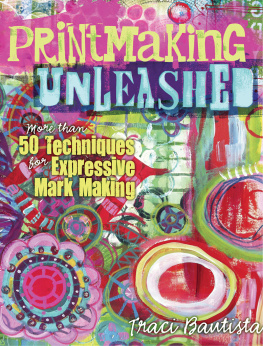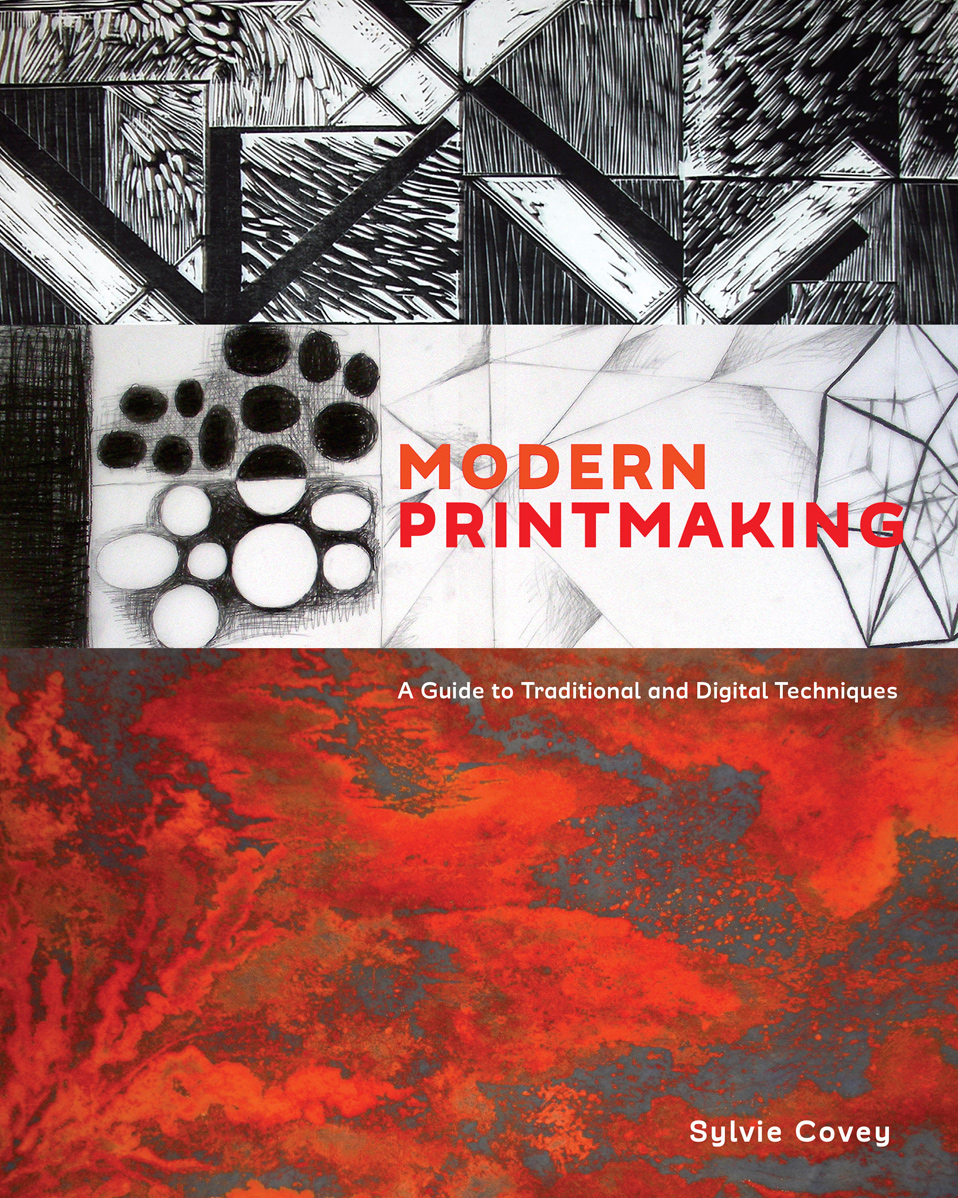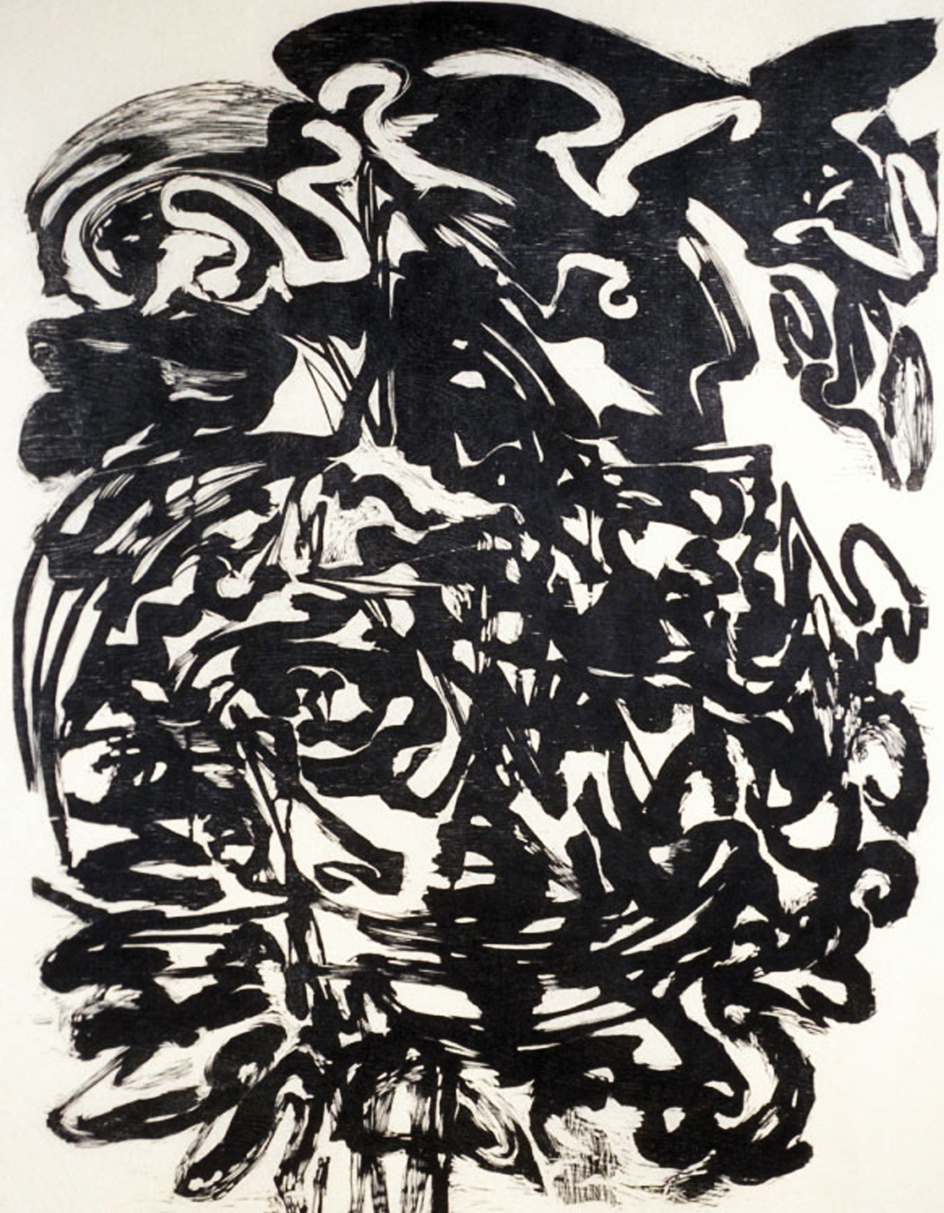Contents
Vincent Longo, To Admiral Meaulness, 1959, woodcut, 43 30 inches (109.2 76.2 cm).
Copyright 2016 by Sylvie Covey
All rights reserved.
Published in the United States by Watson-Guptill Publications, an imprint of the Crown Publishing Group, a division of Penguin Random House LLC, New York.
www.crownpublishing.com
www.watsonguptill.com
WATSON-GUPTILL and the WG and Horse designs are registered trademarks of Penguin Random House LLC
Library of Congress Cataloging-in-Publication Data
Covey, Sylvie.
Modern printmaking : a guide to traditional and digital techniques / Sylvie Covey.
First Edition.
pages cm
1. PrintsTechnique. I. Title.
NE850.C68 2016
769.1dc23
2015015473
Hardcover ISBN9781607747598
eBook ISBN9781607747604
FRONT COVER IMAGE DETAILS, FROM TOP TO BOTTOM:
Vincent Longo, B&W Overlap, 2008, woodcut, 25 36 inches; Karen Kunc, Graphite drawing from Along an Even Horizon, 2013, woodcut, 14 50 inches; Sylvie Covey, The Inner World, 1979, viscosity etching on zinc, 18 36 inches.
eBook design adapted from printed book Design by Kara Plikaitis
v4.1
a
FOREWORD
To be an instructor at the Art Students League of New York is to hold a position of distinction among artists. The Leagues faculty is an elite group of professional artists who are all recognized in their fields. Each instructor has a unique voice that puts a signature to his or her work and ultimately identifies its creator. The mastery and knowledge they convey to their students come from a lifetime of dedication and exploration of their chosen mediums. It is that dedication, as well as their ability to teach the techniques and means to understand the language of art, that inspires the thousands of students who study at the League each year and the literally hundreds of thousands who have trained here for nearly a century and a half.
Sylvie Covey exemplifies those qualities of professionalism, mastery, and dedication. An migre from Paris, where she studied at the prestigious cole Nationale Suprieure des Arts Dcoratifs, Ms. Covey came to the League to continue her studies, taking classes with master printmakers Michael Ponce de Leon and Seong Moy. She went on to study at Hunter College in New York, receiving an MFA in printmaking, drawing, and works on paper. Through this intensive study Ms. Covey became a master printmaker, not only mastering the traditional techniques of intaglio, lithography, and relief printmaking but also using that knowledge to establish her own voice within the contemporary oeuvre of digital printmaking and photo-etching as well as photolithography.
Ms. Covey has proved to be as notable an instructor as she is an artist. Every year as part of the Leagues annual student concourse, her class exhibitions reveal the highly polished professionalism of her students, who have availed themselves of their instructors rich and in-depth knowledge of the entire medium. Students at the Fashion Institute of Technology and the Art Center of Northern New Jersey continue to benefit from Ms. Coveys expertise.
As Executive Director of the Art Students League, I am very proud to call Sylvie Covey a League instructor. Along with the other members of the Leagues faculty, she is helping to pave the way for todays generation of artists to explore the potential of a traditional medium in ways that will allow them to speak eloquently and poetically in the future. Ms. Covey herself is a luminous example of that potential realized.
Ira Goldberg
Executive Director, Art Students League of New York September 2014
Gregory Haley, #13, 2007, color mezzotint, 6 8 inches (15.2 20.3 cm).
Sylvie Covey, Space Tree #5, 2015, digital print, 40 30 inches (101.6 76.2 cm).
ACKNOWLEDGMENTS
I wish to thank all the talented participating artists, without whom I would not have been able to write this book, in particular Vincent Longo, for whom I have the utmost respect, admiration, and fondness; Michael Pellettieri, for all his valuable support, help, and kindness over the years and particularly for his participation in the lithography and silkscreen sections of the book; Richard Pitts, for his talent, tremendous inspiration to numerous artists, and continuous creative enthusiasm for and support of many art endeavors, including my own projects; and Mike Lyon, for generously sharing his knowledge and expertise in Japanese block printing and new technologies in post-digital graphics, as well as for providing access to his ukiyo-e prints collection. I thank all my faithful students and esteemed colleagues for opening their hearts and sharing their creative thoughts and work and for their valuable contributions to this book overall.
Greatful thanks also to Watson-Guptills Jenny Wapner, my editor Lisa Westmoreland, copyeditor James Waller, designer Kara Plikaitis, and publicist Natalie Mulford. I thoroughly enjoyed this process and learned a lot. Thank you all for your guidance and experience.
Albrecht Drer, The Four Horsemen of the Apocalypse, c. 14961498, woodcut, 15 11 inches (39 28 cm). Staatliche Kunsthalle, Karlsruhe, Germany.
Introduction
William M. Ivins Jr., curator of prints at the Metropolitan Museum of Art in New York City from 1916 to 1946, had a strictly functional definition of printmaking. In Prints and Visual Communication (1953), he wrote,
The various ways of making prints (including photography) are the only methods by which exactly repeatable pictorial statements can be made about anything. This exact repetition of pictorial statements has had incalculable effects upon knowledge and thought, upon science and technology, of every kind. It is hardly too much to say that since the invention of writing there has been no more important invention than of the exactly repeatable pictorial statement.
The beginnings of printmaking go all the way back to 3500 BC, when the civilizations of Mesopotamia started using carved cylinder seals. Rolled on wet clay tablets, these little stone seals produced raised designs that acted as signatureseach an exactly repeatable pictorial statement, to use William Ivinss phrase. Over the following centuries, many cultures used carved reliefs to print on fabrics and ceramics, but the practice of printing on paper had to wait until papers invention, which happened in China, probably sometime between 140 BC and the early first millennium AD. From China, papermaking spread to Tibet, Korea, and Japan, and then into Central Asia, the Middle East, and North Africa, reaching southern Europe (Spain and Italy) in the twelfth century. It was not until the invention of the printing press in the mid-fifteenth century, however, that paper supplanted parchment and vellum, which had long been used in Europe for hand-written religious texts and official documents.


